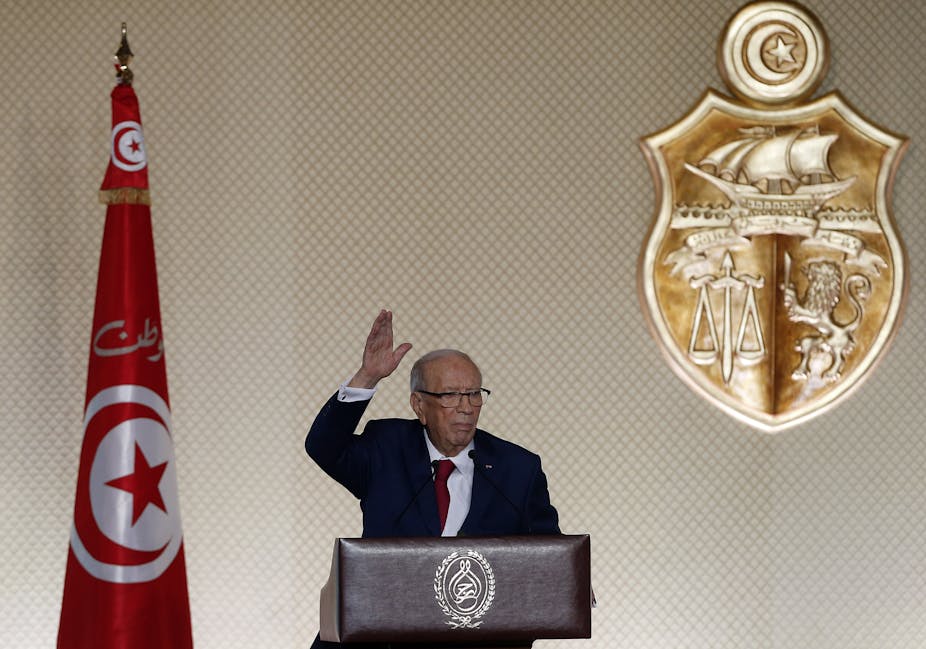The world’s oldest president, Tunisia’s Béji Caïd Essebsi, passed away in July at the age of 92. He had a long legacy in Tunisian politics which has left many feeling like the father of their nation has gone.
Béji Caïd Essebsi’s was born in the village of Sidi Bou Saïd on November 29th, 1926. He lived in the capital Tunis and Hammam-Lif, a coastal town about 20km away from Tunis. He got to know these neighbourhoods well, as he did the rural areas surrounding his parents’ farm in the Fahs region.
His education at the modern Sadiki college and the Paris Law Faculty consolidated his vocation as a nationalist and an activist. A brilliant lawyer, with a perfect mastery of classical Arabic and French, Essebsi could recite poetry and the Koran from memory.
In the lead-up to his election to the highest office in 2014, Tunisians nicknamed him “Bajbouj”, out of fondness for his wit and humour. With the gift of persuasion, he led a political career spanning over half a century and had an immense sense of nationalism.
A veteran of the old regime
The name “Caïd Essebsi” dates back to his illustrious ancestors. He was closely related to the Husainid Dynasty of Beys who led the country for 250 years – from 1705 until the establishment of the Tunisian republic in 1957.
Essebsi faithfully served Habib Bourguiba, Tunisia’s first post-independence president, serving in various positions. He was Head of National Security, Minister of the Interior, Minister of Defense, Ambassador, and Minister for Foreign Affairs.
But when Bourguiba was proclaimed “President for life” in 1974, Essebsi joined the opposition. They called for an end to the one-party system, and for greater freedoms.
In 1987, Zine El Abidine Ben Ali – who was Prime Minister at the time – deposed an aging Bourguiba. This came to be known as a “medical coup d’État” because Bourguiba was in such poor health he couldn’t carry out his duties.
Essebsi served under Ben Ali as the President of the Parliamentary Assembly, but eventually left the political stage for a while. A clever diplomat, Essebsi distanced himself from the Ben Ali regime, sharing neither its authoritarian nor mafia-like, clannish tendencies.
Post-revolution legacy
In an ironic quirk of history, Essebsi, a man of the “old regime”, returned to political office after the country’s 2011 “Jasmine” or “Dignity” revolution.
He led the transition government and oversaw the organisation of Tunisia’s first free elections. These brought the Islamist Ennahdha party into power.
But the country was thrown into deep crisis under the leadership of the troika –- made up of the Islamists and their allies –- culminating in the assassination of three political figures; Naguedh, Belaïd and Brahmi. They became seen as martyrs of the revolution.
In 2012 Essebsi founded the Nidaa Tounes (“Tunisia’s Call”). The party united the opposition and won the legislative and presidential elections of 2014.
Essebsi had to share power with the Islamists, much to the chagrin of many voters, including around a million women who had deliverately voted for him. But, forged in Paris in 2013, the historic compromise between Essebsi and Rached Ghannouchi, the influential leader of Tunisia’s Islamist Ennahda party, opened up the national dialogue and eased tensions between secularists and Islamists.
Three master strokes
Essebsi’s legitimacy as a leader was reinforced by three master strokes that became part of his, admittedly mixed, legacy. His task of rebuilding State authority was undermined by the lack of a unified political ideology, eventually leading to the implosion of the Nidaa Tounes party.
Essebsi’s first master stroke was reconciling Tunisia with its nationalist past. This meant putting “Tunisian-ness” above Wahhabism and political Islam.
Signs of this historic move include the government taking back management of places of worship, the return of the statues of Bourguiba to their original locations, and the drawing up of a bill for sex equality in inheritance law.
His second master stroke was refusing to sign a proposed electoral law amendment, tabled by the government in the lead-up to the 2019 elections, that was seen as a form of political exclusion.
Essebsi’s subtle refusal, who opposed the Head of the Government, Youssef Chahed, signalled the end of the hegemony of the ruling coalition represented by the new State party, Tahya Tounes (“Long Live Tunisia”), and its Islamist allies, and opened the way for new political figures to lead the latest polls.
Essebsi’s final master stroke was his refusal to be placed on life support as he lay dying. This prevented a power vacuum that would have allowed the Head of Government to become President of the Republic.
By choosing to die naturally on 25 July 2019 –- the eve of Tunisia’s Republic Day –- “Bajbouj” ensured appropriate institutional succession and brought the nation together around the myth of a founding father.
Honoured with a Beylical funeral service, President Essebsi succeeded where Bourguiba had failed, going down in history as a great statesman. The military, secular organisation of his farewell ceremony, the cavalry’s guard of honour around his casket, the show of symbols, the cries of mourners and the national anthem sung in honor of the deceased are evidence of this.
Essebsi embodies the duality highlighted by historian Ernst Kantorowicz in The King’s Two Bodies between “the physical body”, which perishes, and “the mystical body” that survives as a historical figure and political legacy.
Translated from the French by Alice Heathwood for Fast ForWord.

